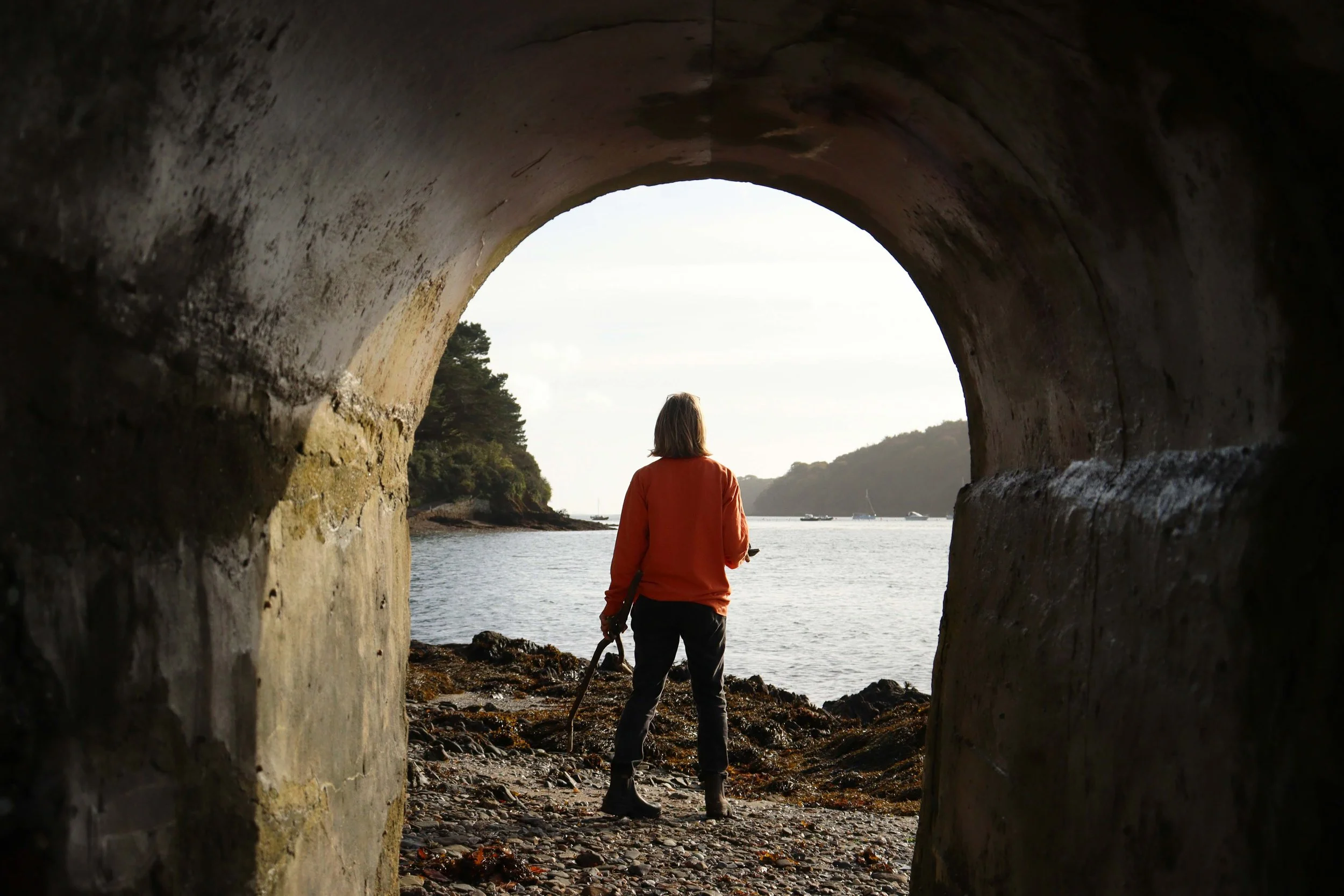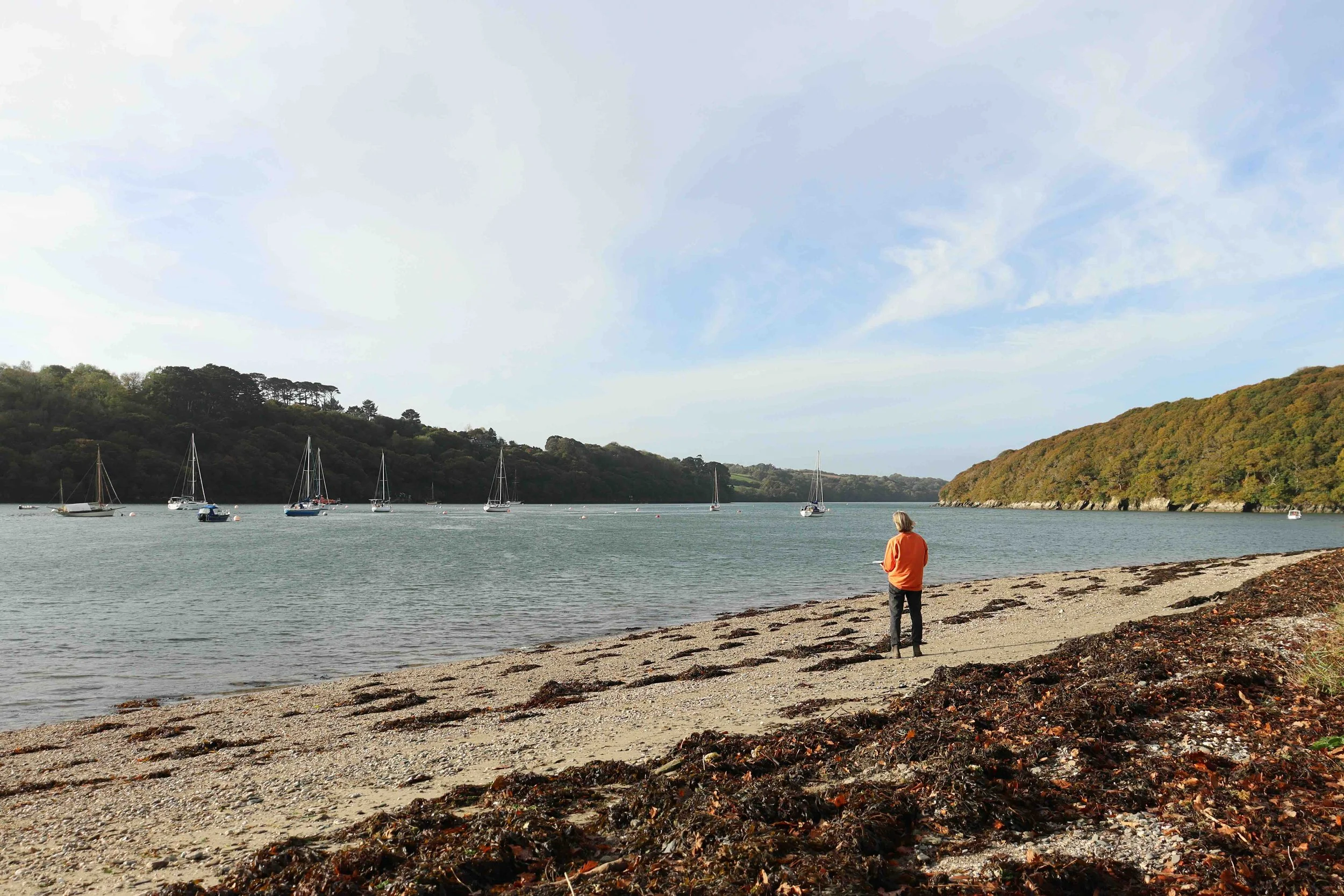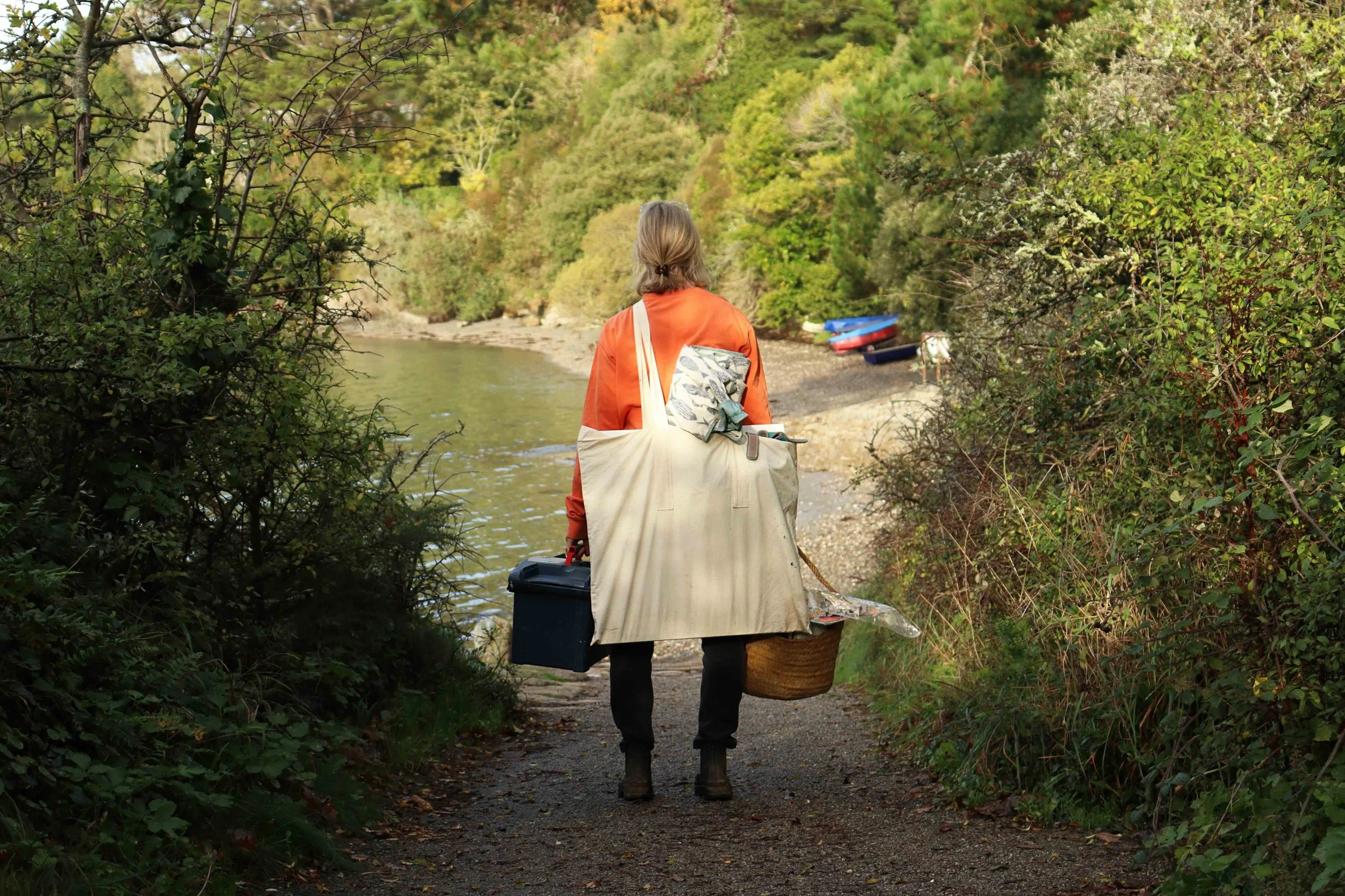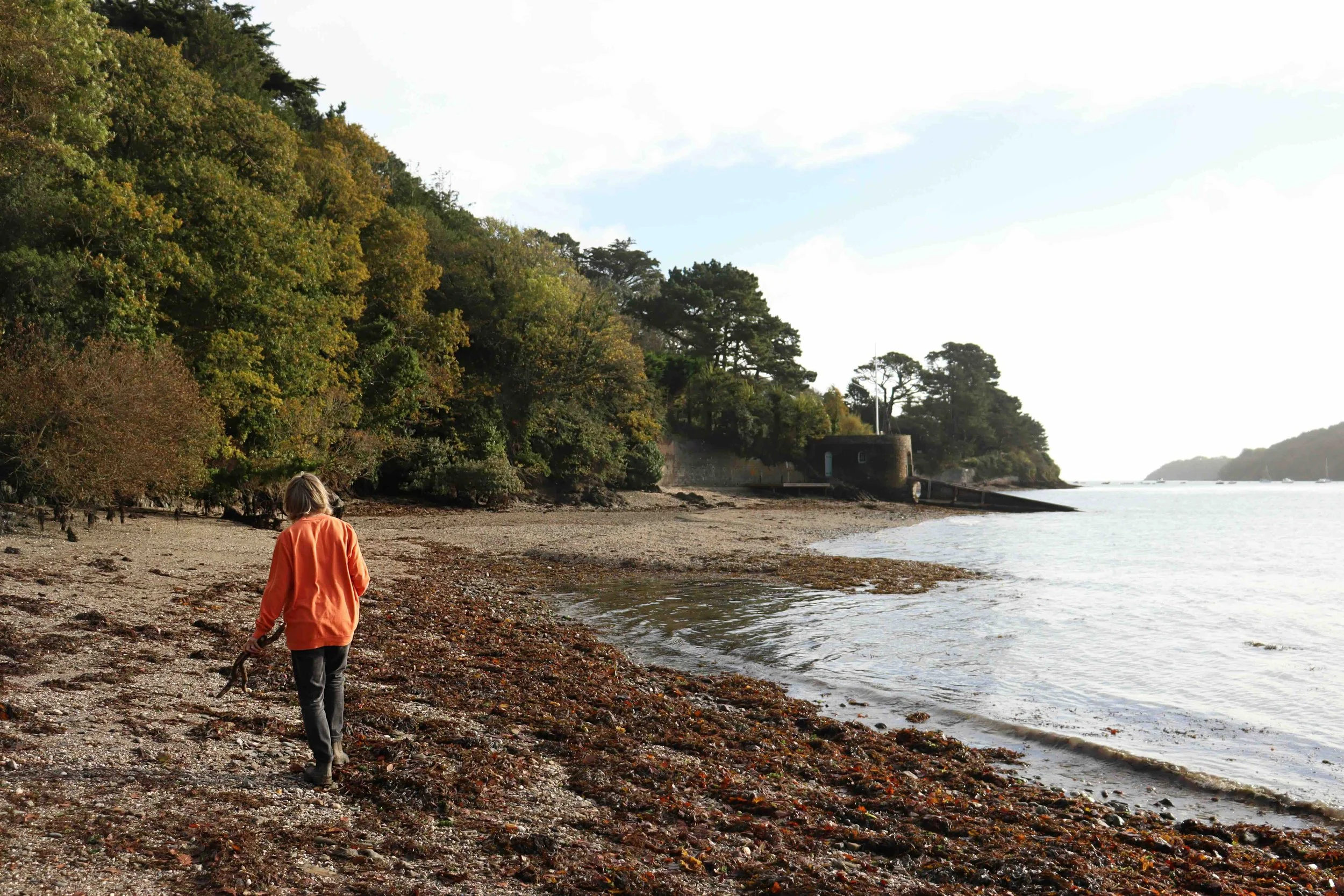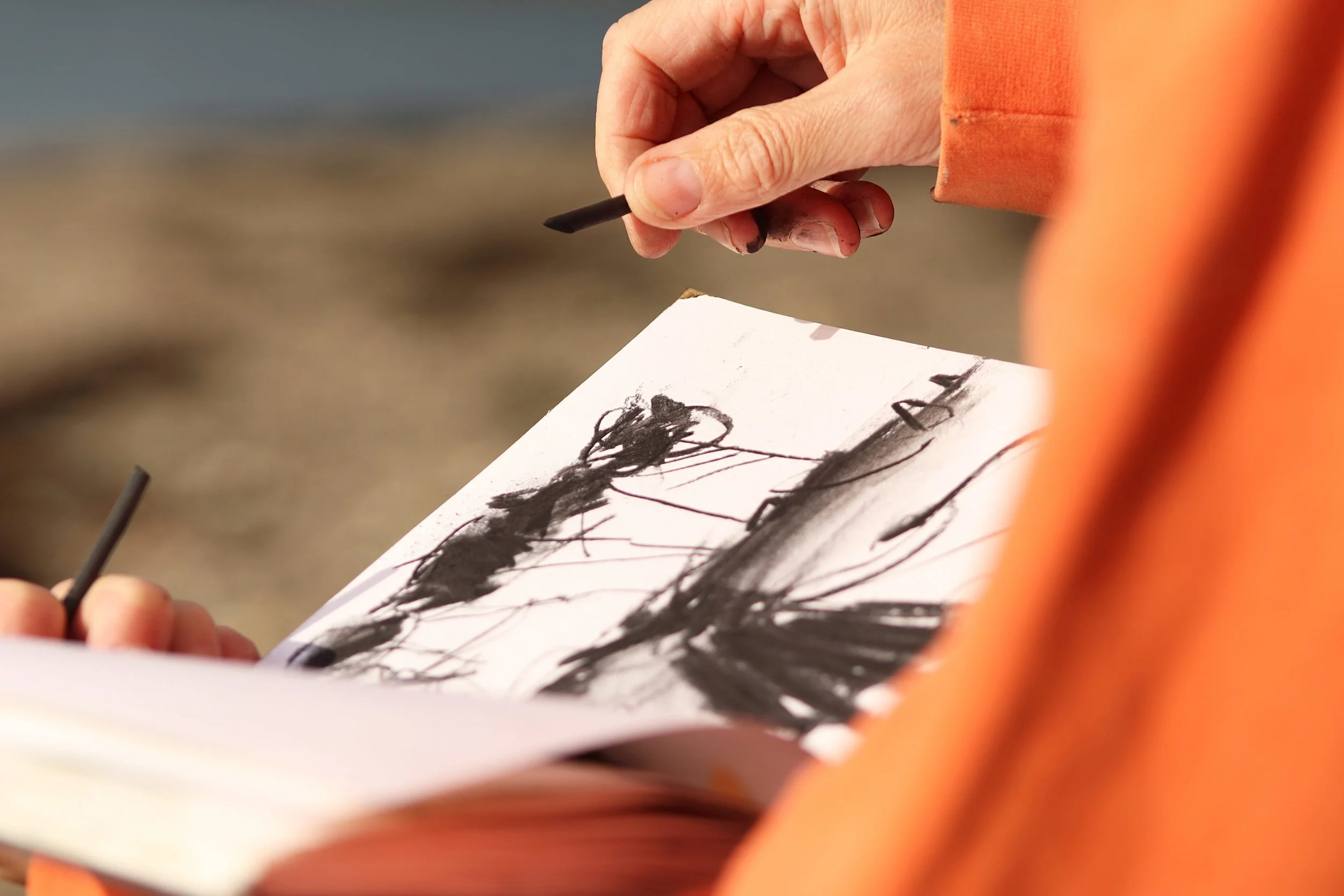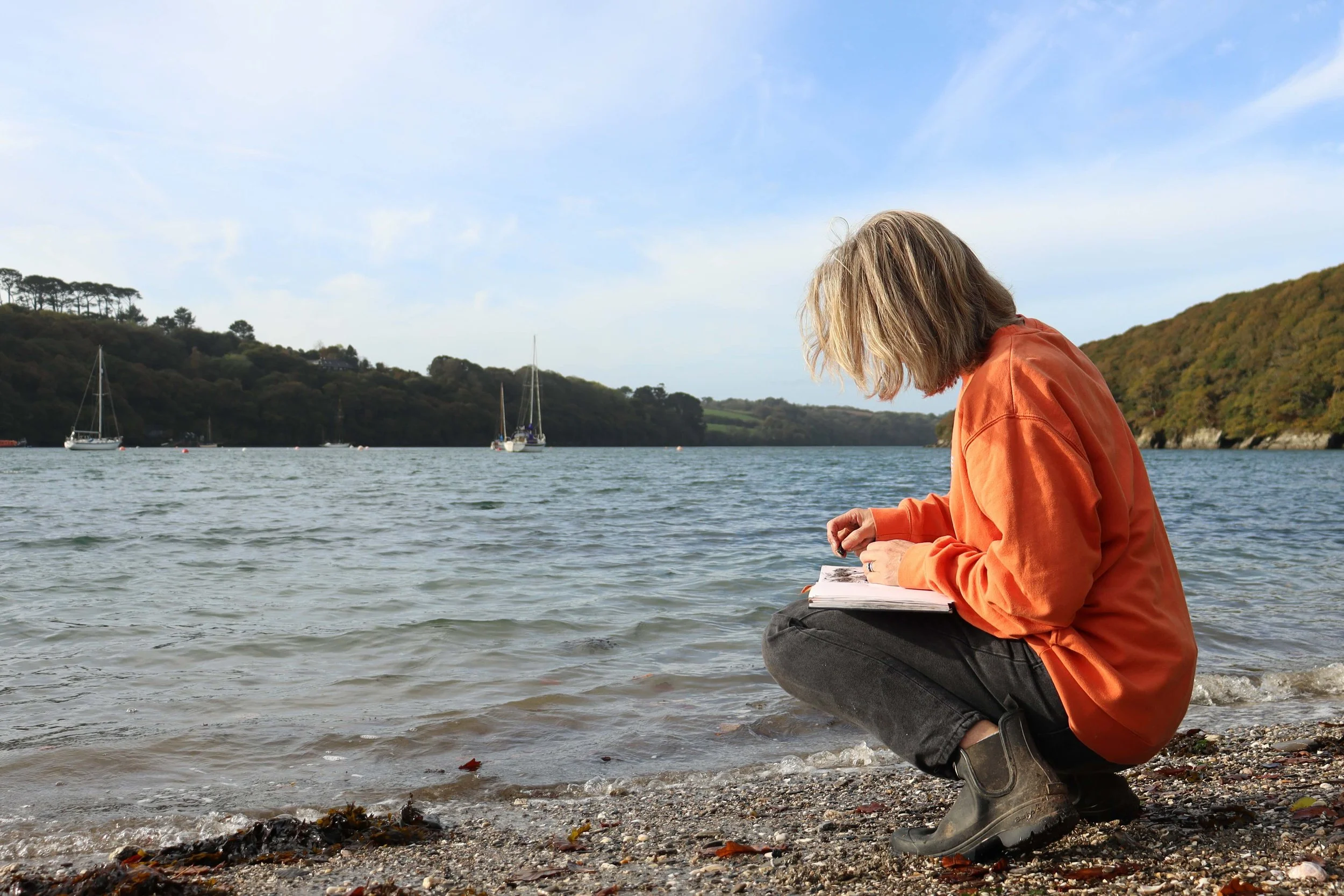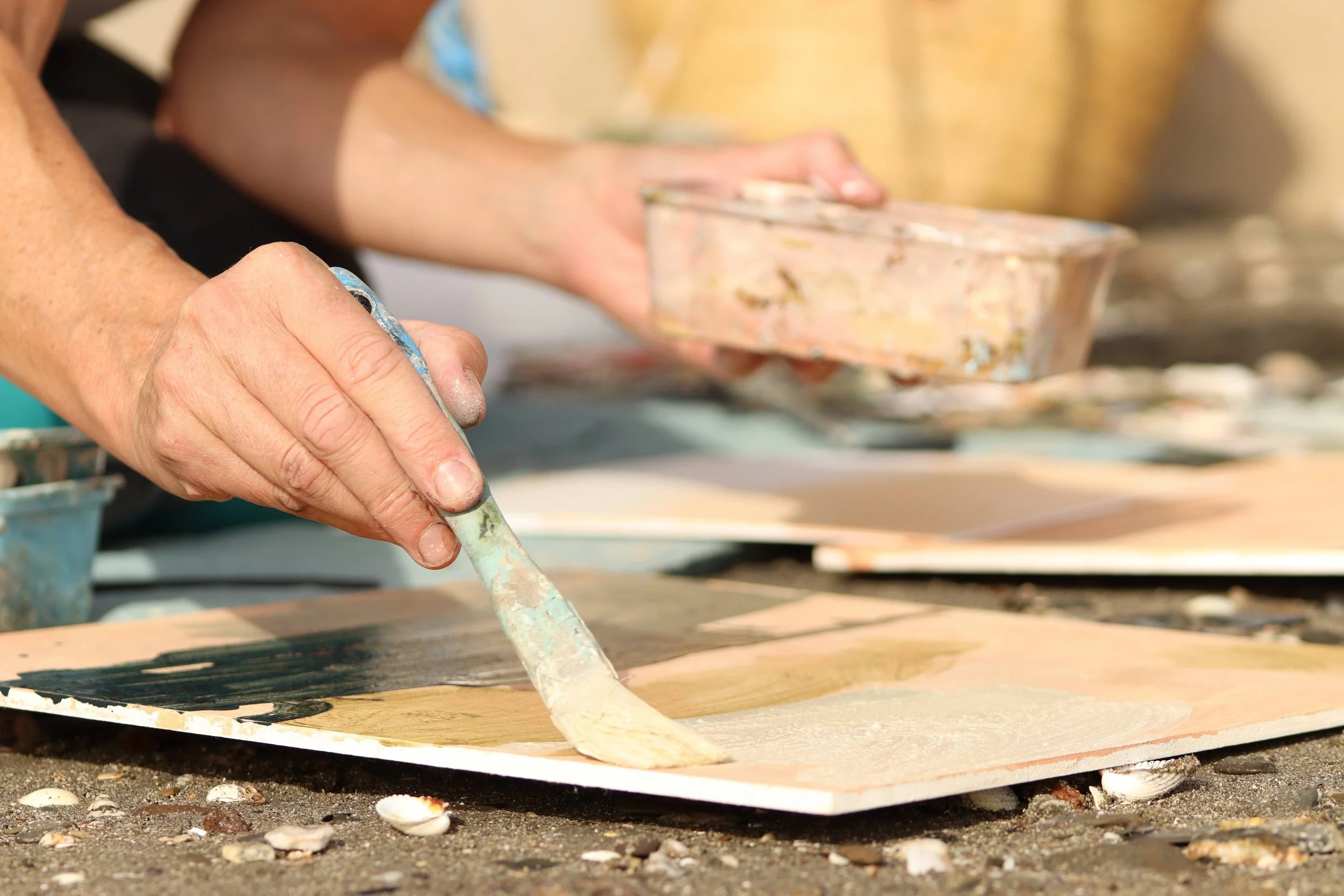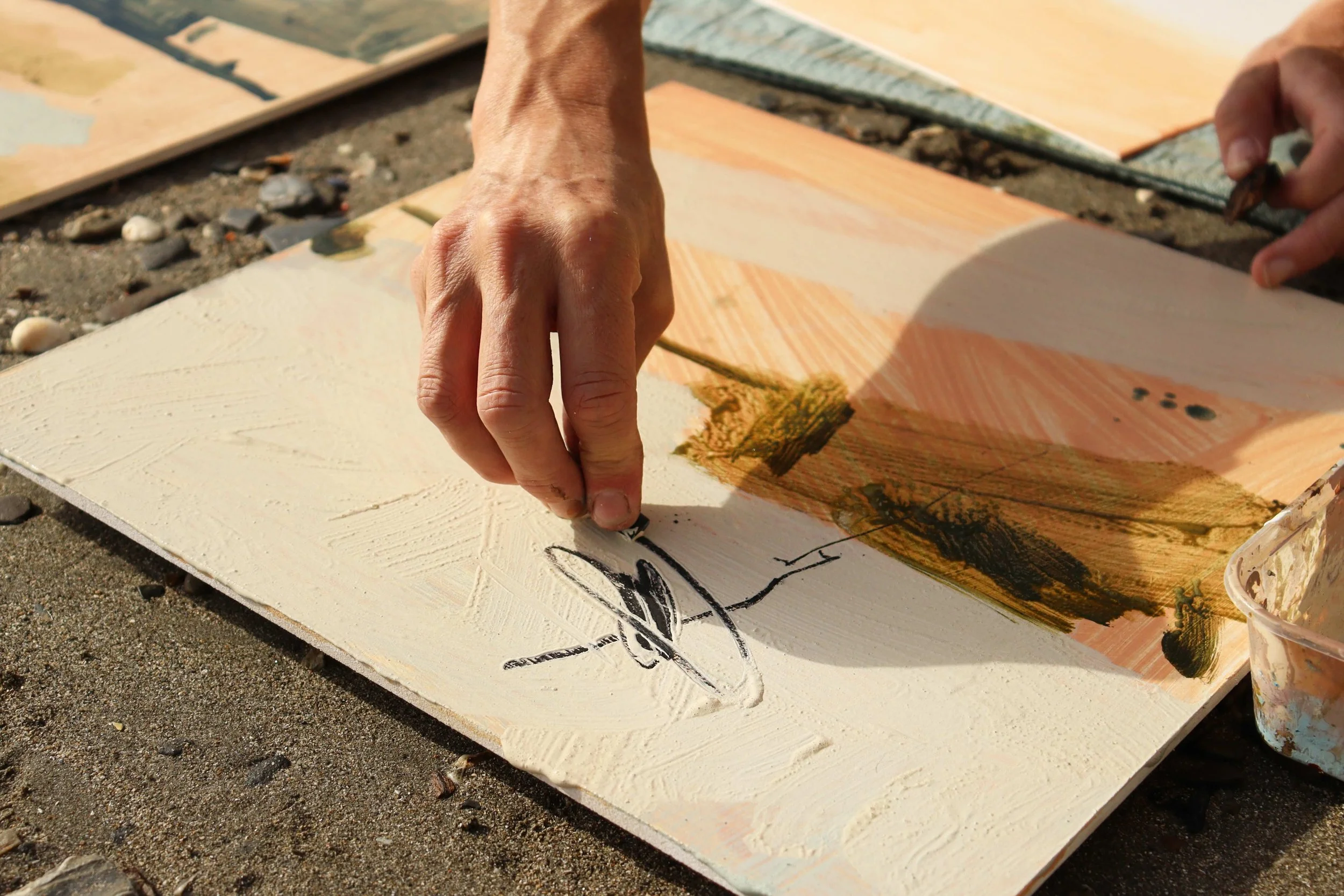A day with painter, Maxine Hart
One thing I love about the blog format is that it’s totally acceptable to ramble. I’ve been meaning to share this project for a while now - years in fact - but it didn’t feel right to share the photos without telling the full story. It can be hard to do this through short-form social media content, so I’m excited to have a space where I’m not limited in my word count!
I met Maxine at the Form Art Festival in 2022, during my second year at Falmouth Uni. One of our assignments that year was to produce a photo series around the natural world - I was hoping for an opportunity to shadow an artist and capture their creative process, so I decided to attend the festival in the hope of meeting someone who incorporates the natural world into their art.
Being in Cornwall, I didn’t have to go far.
There were endless displays of nature-inspired artwork and it wasn’t long until I bumped into my friend, Laura, a talented jewellery maker. She introduced me to Maxine who had a stall a few metres away, and I was immediately taken with her unique landscape paintings. After a brief introduction, we set to work on bringing the project to life.
We met for coffee at the Muddy Beach Café (it wouldn’t be an Emily blog post without a Cornwall recommendation) and discussed how art became prevalent in her life. It turns out she was practically destined to become an artist, with several family members pursuing art in some way shape or form. She attended art residencies in Wales and Italy, and often took part in evening classes with her father. Fast forward a few years and she had earned a Fine Art degree from Birmingham Art School. By the time her twin daughters were 7 and her son was 4, she took the leap with her family and moved to Cornwall.
“It’s always about outside.”
Following our conversation, we arranged a day for me to observe Maxine’s process from start to finish. I not only wanted to capture the process, but also her intentions and what drives her to pursue/create art. I was curious more than anything to understand how she continues to stay inspired - something I struggle with to this day.
We drove to a spot where Maxine regularly paints; Helford Passage. I mentioned this place in my last blog post - situated on the north bank of the Helford River, it is home to some of the most idyllic beaches and Cornish scenery. Supplies in hand, we made our way down to the beach.
It is rare that the first photo I take is my favourite from the series, but it happened on this day.
I was fascinated to see how Maxine immerses herself in her environment. Not only does she draw visual inspiration from the world around her, but she also uses materials from nature in her process. We walked up and down the beach as she picked up twigs, stones, and even fragments of charcoal from an old campfire. While some of these items would serve as tools, others would provide colour references or inspire textures within the painting.
“You’re in the moment. You’re in the landscape.”
When I first met up with Maxine, she explained how she was encouraged to keep sketchbooks in school - it was a way of constantly being ‘tuned into art’. This is something she applies to her practice today, particularly out in nature. Before making a start on her paintings, she produced some quick studies of the landscape in her sketchbook, using her own charcoal and pieces of charcoal from the beach. This medium allows her to bring depth and detail to a seemingly rough sketch.
We eventually settled in a spot close to shore where Maxine laid out her materials and prepped the canvases. She collected water from the river to mix with her paints, allowing her to experiment with different consistencies and opacities.
“It’s often about the properties of paint, rather than what you’re painting.”
Plein Air painting allows Maxine to connect with her environment and look beyond the physicality of the landscape. The resulting artwork is both visually striking and symbolic of the place it was made. Plein Air translates to ‘open air’ in French and refers to the act of creating art outdoors. It comes with its challenges, but it can also present creative opportunities - Maxine was once caught in a downpour while painting, but the rain droplets formed a unique texture in the paint. Recognising and embracing the changeability of nature allows Maxine to work with the elements, rather than against them.
She uses a combination of acrylic and charcoal in her paintings, often working on several canvases at one time. There was something very freeing about her ability to juggle multiple paintings - she worked quickly yet with intention, demonstrating her years of experience and commitment to her craft. As someone who often falls victim to overthinking, I found this approach very refreshing.
We were practically undisturbed on this part of the beach. People occasionally walked by with their dogs - one dog took a particular interest in the paintings, much to my panic - but mostly it was quiet. This created a real sense of being immersed in the landscape, with no external noise from the modern world. Having this space and freedom to create is invaluable to Maxine’s practice, as much as it is mentally healing.
After several hours in the sun, Maxine had produced four unique and beautiful paintings. Some of these would be sold as prints, others only as originals.
I am grateful to this day for the opportunity to learn from Maxine, in a personal and creative capacity. Although this was just a glimpse into her practice, it was a powerful reminder that art should be energetic, emotional and playful. Most importantly, it is a lesson in trusting the process and rejecting perfectionism.
Following completion of the project, the third image shown in this blog was selected as the winning photo in a photography competition hosted by Kesvewa in Kernow, a live music event at The Eden Project, Cornwall. The competition theme was ‘What does living in Cornwall mean to you?’ and it was awarded first place by former student, now art teacher, Kelly Oakley, who described it as a fun expression of the ‘love and pain’ of living in Cornwall. The image was exhibited alongside other contest entries in the Mediterranean Biome.
A huge thanks to Maxine for granting me this experience, and a big thank you to anyone who reads or shares this post. I hope it can provide some inspiration in your projects and daily lives.
Em x


